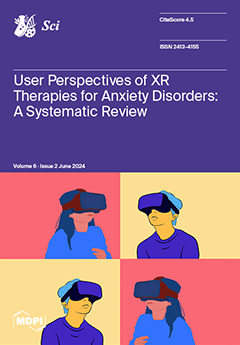During the COVID-19 pandemic, physical activity was significantly decreased in all age groups. The purpose of this study is to investigate children’s motor skills by administering an adapted physical activity program for the development of coordination skills. The sample consisted of 28 children
[...] Read more.
During the COVID-19 pandemic, physical activity was significantly decreased in all age groups. The purpose of this study is to investigate children’s motor skills by administering an adapted physical activity program for the development of coordination skills. The sample consisted of 28 children aged 8 to 12 years, 20 neurotypical children and 8 with ASD-HF. Data collection employed various methods, including a personal information form, a leisure time exercise questionnaire, a semi-structured interview, and the Harre Dexterity Circuit for assessing physical activity improvements. The results of the two-way analysis of variance (two-way ANOVA) Tukey HSD test showed the differences between the specific groups, ASD-P vs. ASD-O (
p < 0.001), ASD-O vs. AB-O (
p < 0.001), ASD-O vs. AB-P (
p < 0.001), ASD-O vs. AB-P (
p = 0.136), ASD-P vs. AB-P (
p < 0.0010, and AB-P vs. AB-O (
p = 0.003). As result, both groups showed strong interest in practicing physical activity, and no statistical difference was found in doing so at home or in attendance, showing that physical activity practice is a tool for parent–child bonding and mutual enjoyment, emphasizing that the mixed approach yielded positive results in all participants.
Full article





